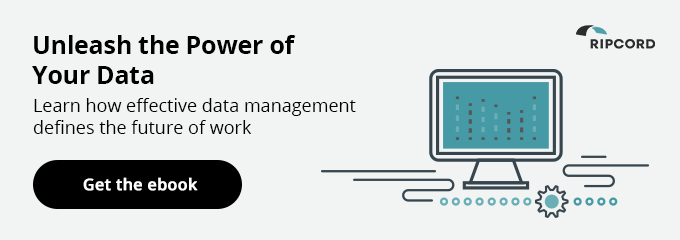
How to Tell It's Time to Say Goodbye to a Legacy Enterprise Content Management System
As a business manager or owner, you might be wondering if it's time to upgrade your organization's legacy enterprise content management (ECM) system. Perhaps you were the one to lead the charge in getting it implemented a decade or more ago, or maybe you took great pains to learn its ins and outs. Whether you were instrumental in choosing and using it or not, you're likely aware that ditching it in favor of a new system is not a simple undertaking. So, if you are wrestling with the decision about whether to limp along with the ECM you have or make the change, we have some thoughts that may help. Here are the top three ways to know when it's time to upgrade your old ECM.
Sign #1. New Features Aren't Supported
Legacy ECMs simply do not offer all the advanced features that cutting-edge ECM systems offer today. For example, perhaps you've been reading more and more about artificial intelligence (AI) and the significant role it plays in helping enterprises uncover valuable insights from internal data. As Tim Keary shared in a piece for Information Age magazine, "Simply creating templates of documents is no longer sufficient. Enterprises want insights as well."
Unfortunately for those with legacy ECMs, such insights may be out of reach and only available to organizations with modernized document management systems. Take the application of AI to optical character recognition (OCR), for example. AI-powered OCR can unlock previously unreadable text in handwriting and images (where invaluable insights for your business may lurk), but your old system isn't likely to support that capability. A modern document management system equipped with AI technology can easily extract valuable insights from both structured and unstructured data, transforming your enterprise content management.
Sign #2. You're Throwing Good Money After Bad
If you have an old ECM system, chances are it's on life support, and that's costing your organization. An outdated ECM could necessitate the spending of thousands of dollars a year without much return. You're probably not getting new features, since it's unlikely the vendor plans to support it much longer.
That's not as far as wasted cash outlay goes. If you have an antiquated, clunky ECM system, people probably aren't getting what they need out of it. And that's expensive. The per-year, per-employee cost of not being able to locate needed information at the time it's needed is about $3,300, according to research firm IDC. That adds up pretty quickly for an organization with multiple employees. Upgrading to a modern ECM system can streamline document management processes, reduce operational costs, and improve productivity, offering a significant return on investment.
Sign #3. The Old System Never Really Caught On
Maybe your firm implemented your now-ancient ECM before ECM implementation was widespread, and consequently, no one paid much attention when the vendor trained the team on it. Or perhaps your employee pool has experienced complete turnover, and there's now no one left at the organization who was there when the old system was implemented.
No matter the 'why,' if your legacy ECM was never widely used, or your team's default method of locating information rarely, if ever, includes it, you need a new system. Modern ECM systems are user-friendly, intuitive, and designed to enhance collaboration and accessibility. When employees can easily locate and manage documents, it boosts efficiency and ensures that critical information is always at their fingertips.
Embrace the Future with Ripcord
When you're ready to make the transition, contact Ripcord. We'll work with you to implement an ECM that works for you — one that will help you unleash the power of your data to elevate business decision-making to a new level and drive healthy long-term growth for your organization. Ripcord's ECM solutions are designed to integrate seamlessly with your existing systems, leveraging AI and advanced document intelligence to transform your document management processes.
/Ripcord%20Logo%20-%20Color%2011.png?width=2000&height=620&name=Ripcord%20Logo%20-%20Color%2011.png)


%20What%20It%20Is%20and%20Why%20It%20Matters%20-%20Ripcord.jpg?quality=high&width=596&name=Unlocking%20the%20Power%20of%20Robotic%20Process%20Automation%20(RPA)%20What%20It%20Is%20and%20Why%20It%20Matters%20-%20Ripcord.jpg)
.jpg?quality=high&width=596&name=Revolutionizing%20P%26C%20Insurance%20The%20Power%20of%20Intelligent%20Document%20Processing%20and%20AI%20-%20Ripcord%20(1).jpg)
.png?quality=high&width=596&name=Five%20Best%20Practices%20for%20RPA%20Implementation%20-%20Ripcord%20(1).png)